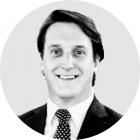Muse-Mandalay Railway to boost border trade with China
Contact
Muse-Mandalay Railway to boost border trade with China
The Bangladesh-China-India-Myanmar Economic Corridor (BCIM) has been dropped from the Belt and Road Initiative setting the scene for the China-Myanmar railway to become a major thoroughafare.
Muse – a town in Myanmar’s northeastern Shan state that borders Yunnan province in southwest China – is the biggest land route for trade between China and Myanmar.
The recently held Belt and Road forum in Beijing saw the handing over of a feasibility report on the proposed Muse-Mandalay Railway project to Myanmar's Minister for Transport and Communications U Thant Sin Maung according to CGTN.
"Since China has decided to drop the Bangladesh-China-India-Myanmar Economic Corridor (BCIM) from the list of projects under Belt and Road Initiative, the China-Myanmar railway is expected to become a major thoroughfare that connects China’s Yunnan Province and Indian Ocean," says Colliers International.
"Linking the border town Muse and the second largest city Mandalay, this project will play a major role in logistics and transportation infrastructure of Myanmar while boosting the border trade with China."
Expected to stretch more than 410 kilometres, the Mandalay-Muse railway will feature a number of significant bridges and tunnels, as well as seven cargo and passenger stations, according to Myanmar Railways.
Given the limited supply of modern commercial real estate in Myanmar, Colliers recommends developers to channel more of their investment into major cities along the railroad and bank on the long-term demand prospects as economic reforms eventually come to fruition.
Sources: CGTN, Colliers International Myanmar
Similar to this:
Is the Muse-Mandalay railway back on track and how does China's BRI affect Myanmar?
What are the benefits of China's Belt and Road initiative for Myanmar?







